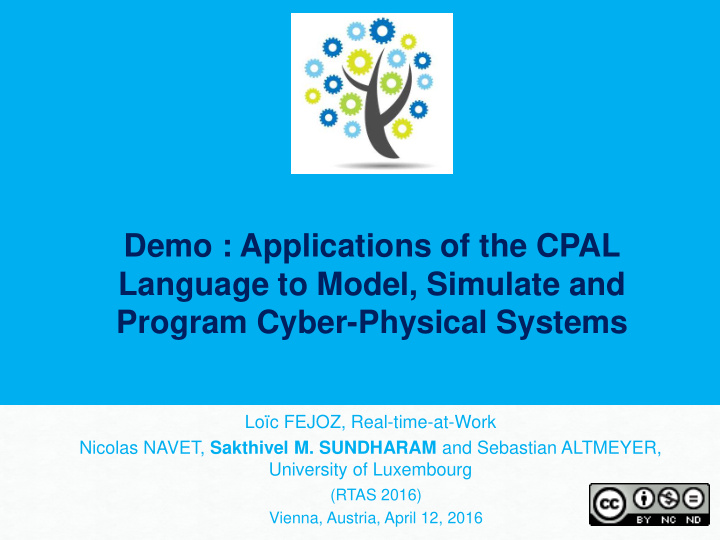



Demo : Applications of the CPAL Language to Model, Simulate and Program Cyber-Physical Systems Loïc FEJOZ, Real-time-at-Work Nicolas NAVET, Sakthivel M. SUNDHARAM and Sebastian ALTMEYER, University of Luxembourg (RTAS 2016) Vienna, Austria, April 12, 2016
Vision behind CPAL In CPAL current release, execution order of processes remains the same in simulation and in real-time mode right abstractions for embedded systems : • Periodic activities and real-time scheduling • Time measurements and manipulation • Finite state machines • High-level interfaces to I/Os • Conceived to facilitate the writing of correct embedded code (incl. restrictions) “Write once, Run Anywhere” of Java does not guarantee anything about timing behaviour on different platforms Development environments are unnecessary complex and often expensive and Model interpretation brings benefits 2 www.designcps.com
Simulating execution times Timing annotations can be derived by built-in monitoring facilities and are respected by the simulator 3 www.designcps.com
Demo # AUTOSAR Pattern – Engine function • Raspberry Pi 2 Model B • CPAL Raspberry Pi Interpreter • Engine coolant temperature Sensor FAE and product info • MCP 3008 – External ADC • SPI Communication between MCP3008 and RASPI • Script for reading MCP 3008 and pipe-out to CPAL • CPAL model for engine coolant temperature calculation Demo # Event order determinism – Simulation / Real-time • CPAL has 2 execution modes • In simulation - Code executed in zero time – except if stated with timing annotations. Interpreter is hosted by OS • In real-time - Code (instructions, read/write I/Os) takes time to execute –depends on the platform Interpreted, executed by bare on Freescale FRDM-K64F: hardware or hosted by OS max. activation jitter: 40us timer interrupt: 0.6us context switch overhead: 2us
Recommend
More recommend